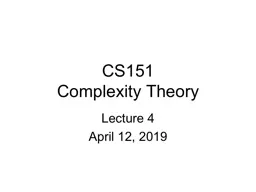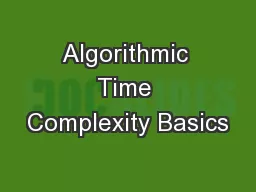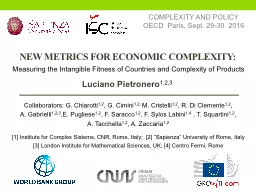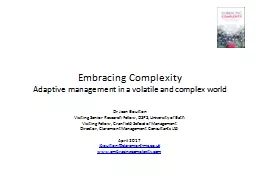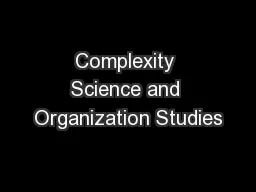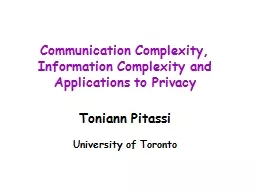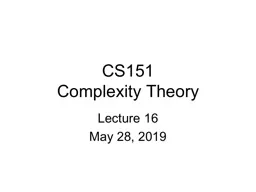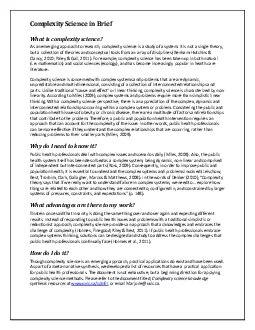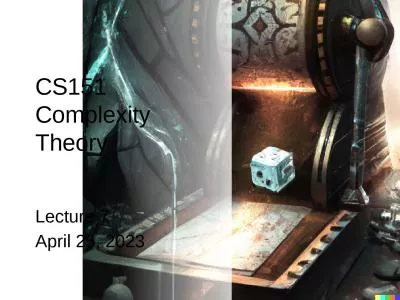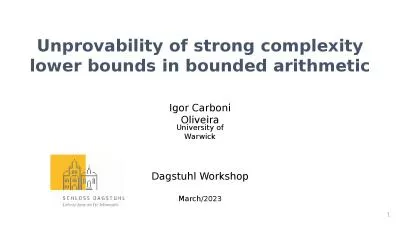PPT-CS151 Complexity Theory
Author : giovanna-bartolotta | Published Date : 2019-11-22
CS151 Complexity Theory Lecture 4 April 12 2019 April 12 2019 A puzzle cover up nodes with c colors promise never color arrow same as blank determine which kind
Presentation Embed Code
Download Presentation
Download Presentation The PPT/PDF document "CS151 Complexity Theory" is the property of its rightful owner. Permission is granted to download and print the materials on this website for personal, non-commercial use only, and to display it on your personal computer provided you do not modify the materials and that you retain all copyright notices contained in the materials. By downloading content from our website, you accept the terms of this agreement.
CS151 Complexity Theory: Transcript
Download Rules Of Document
"CS151 Complexity Theory"The content belongs to its owner. You may download and print it for personal use, without modification, and keep all copyright notices. By downloading, you agree to these terms.
Related Documents

